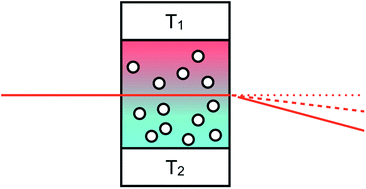Giant thermophoresis of poly(N-isopropylacrylamide) microgel particles
Abstract

* Corresponding authors
a
Biological and Soft Systems Sector, Cavendish Laboratory, University of Cambridge, U.K
E-mail:
slw46@cam.ac.uk
b
Dipartimento di Chimica, Materiali e Ingegneria Chimica, Politecnico di Milano, 20133 Milano, Italy
E-mail:
roberto.piazza@polimi.it
c Dipartimento di Chimica, Biochimica e Biotecnologie per la Medicina, Università degli Studi di Milano, via F.lli Cervi 93, 20090 Segrate, Italy
d BPI, University of Cambridge, Madingly Rise, Cambridge, U.K
e Dipartimento di Fisica, Università degli Studi di Milano, 20133 Milano, Italy

 Please wait while we load your content...
Something went wrong. Try again?
Please wait while we load your content...
Something went wrong. Try again?
S. Wongsuwarn, D. Vigolo, R. Cerbino, A. M. Howe, A. Vailati, R. Piazza and P. Cicuta, Soft Matter, 2012, 8, 5857 DOI: 10.1039/C2SM25061F
To request permission to reproduce material from this article, please go to the Copyright Clearance Center request page.
If you are an author contributing to an RSC publication, you do not need to request permission provided correct acknowledgement is given.
If you are the author of this article, you do not need to request permission to reproduce figures and diagrams provided correct acknowledgement is given. If you want to reproduce the whole article in a third-party publication (excluding your thesis/dissertation for which permission is not required) please go to the Copyright Clearance Center request page.
Read more about how to correctly acknowledge RSC content.
 Fetching data from CrossRef.
Fetching data from CrossRef.
This may take some time to load.
Loading related content
